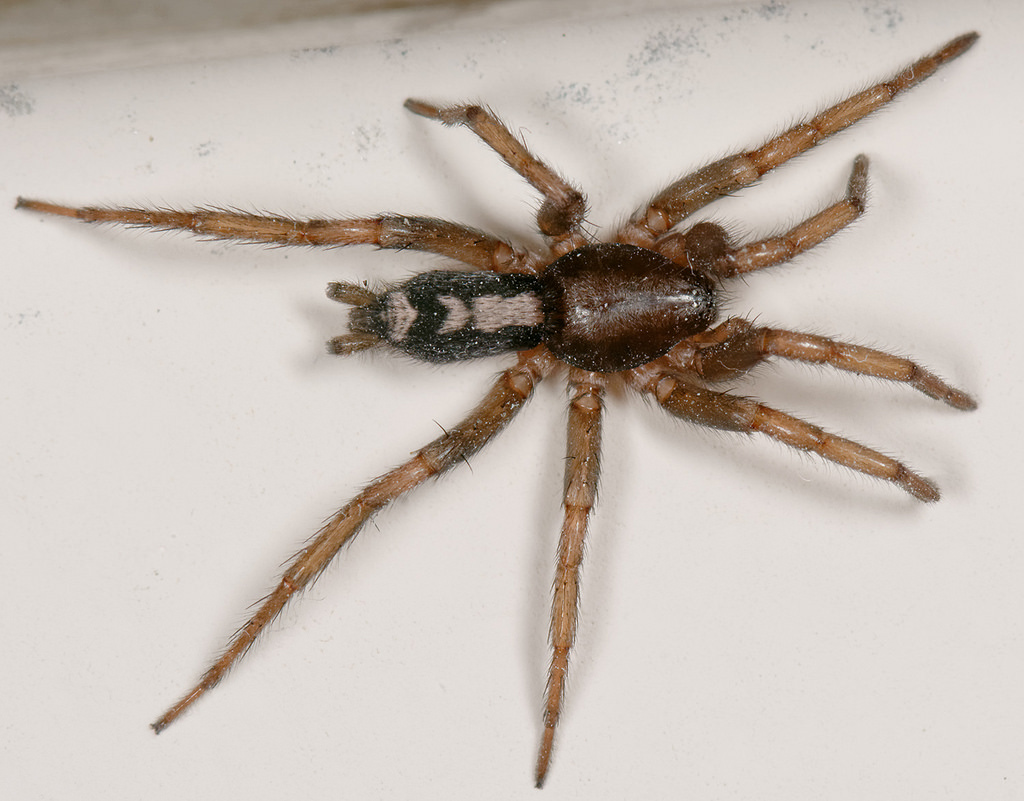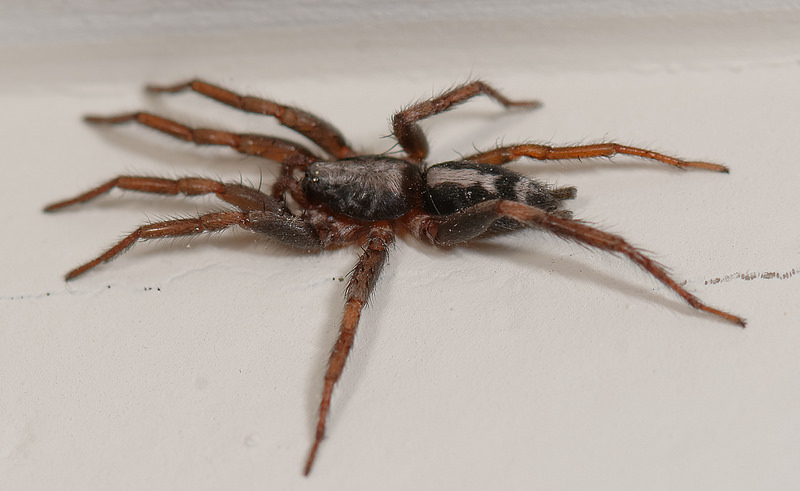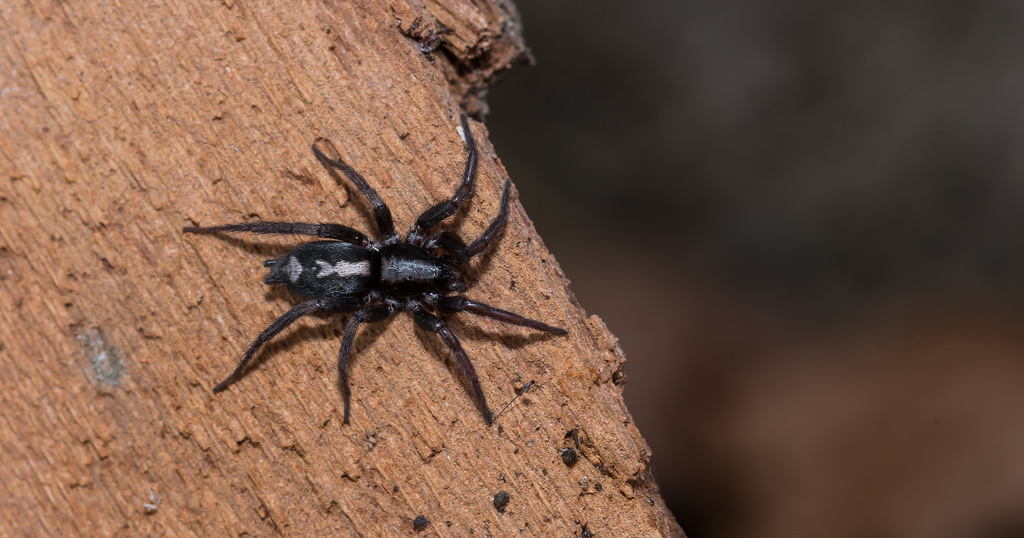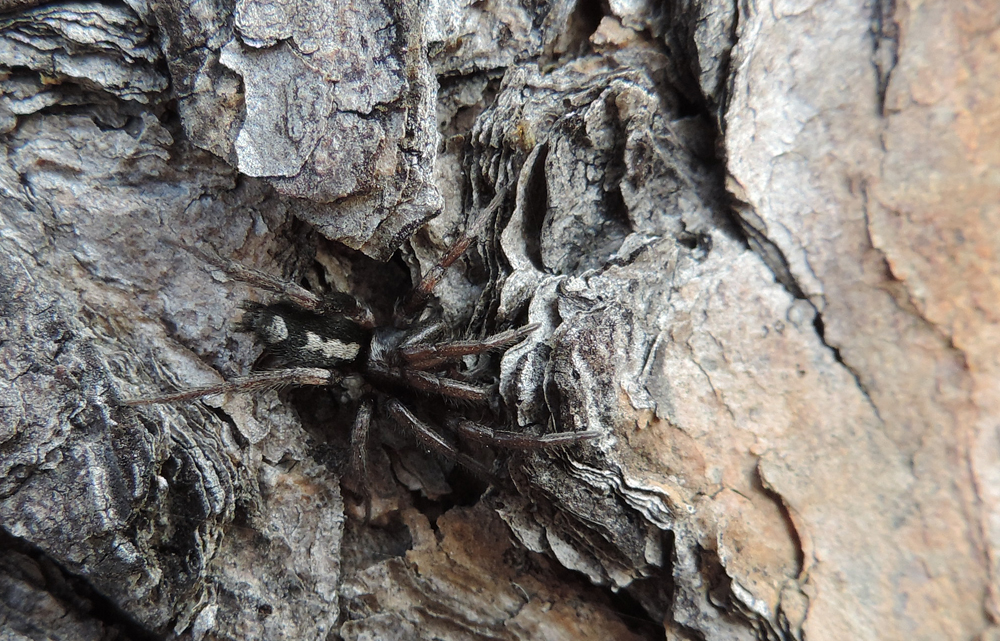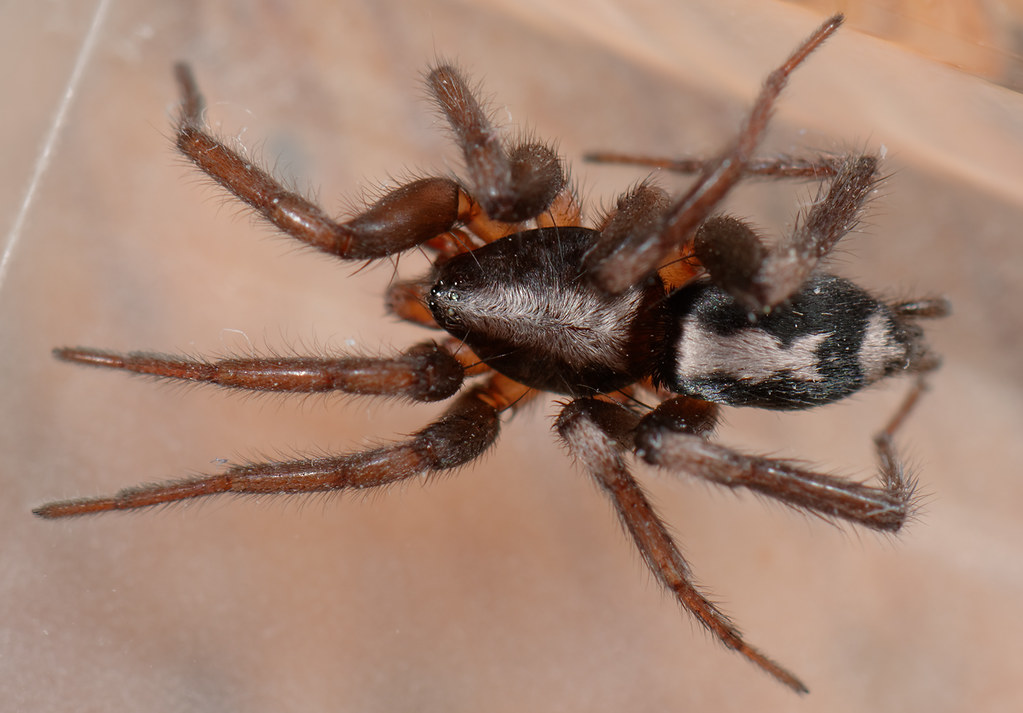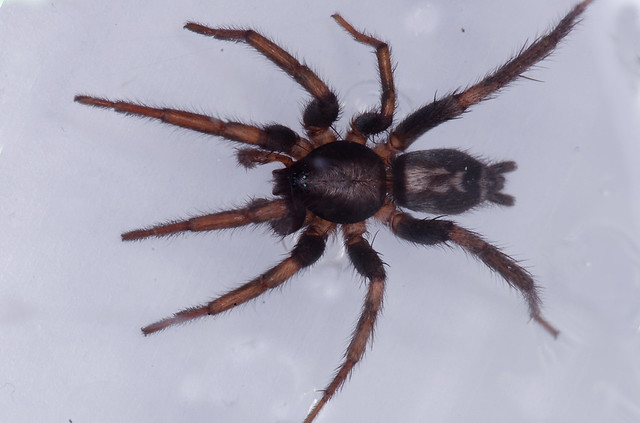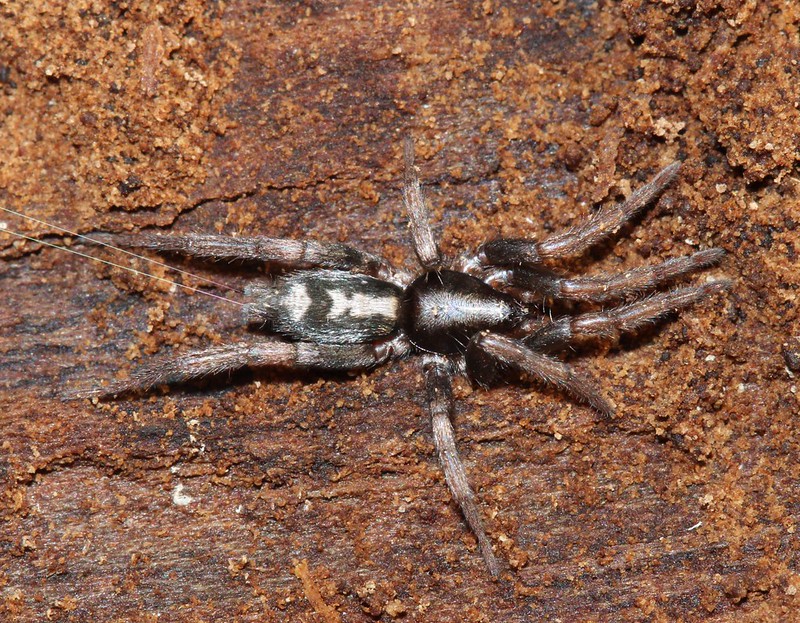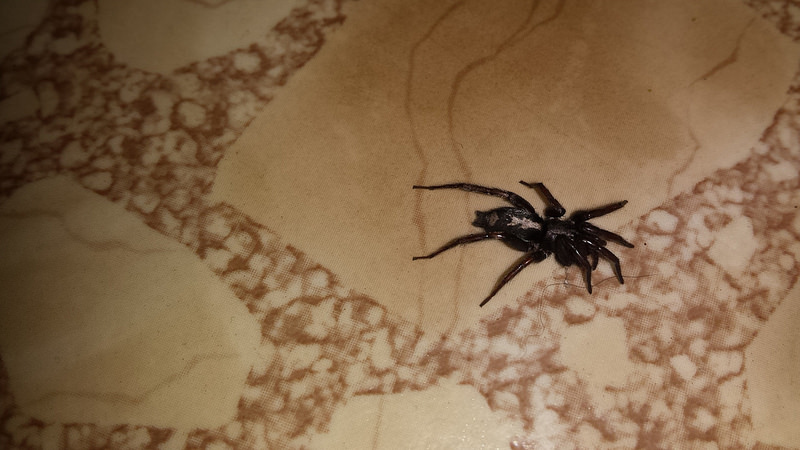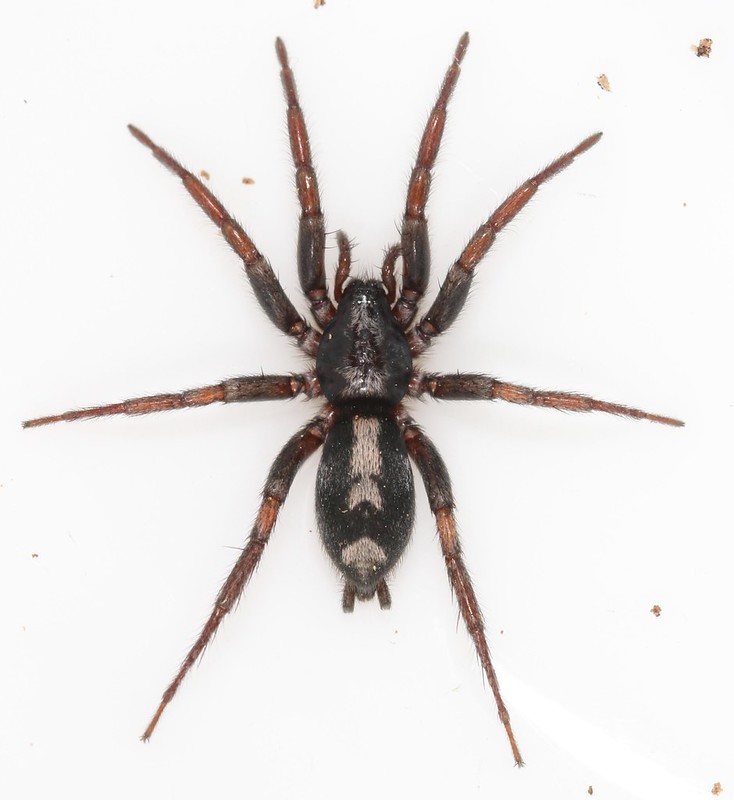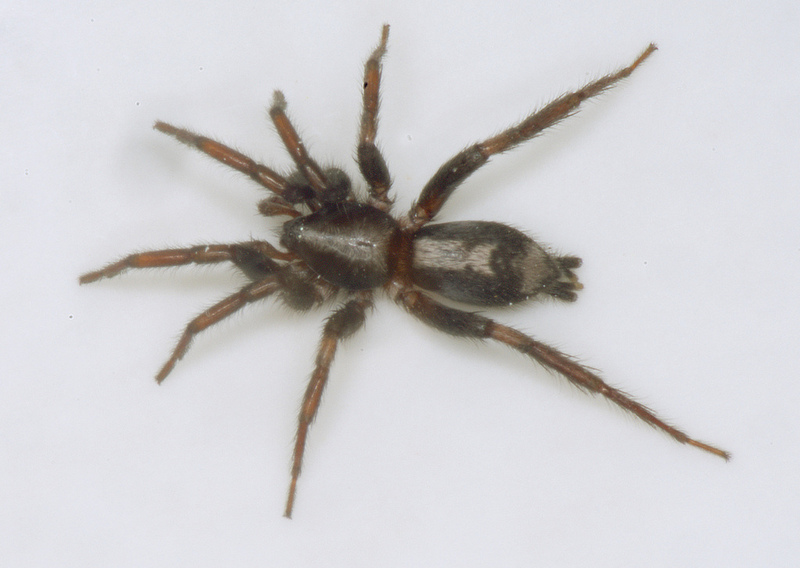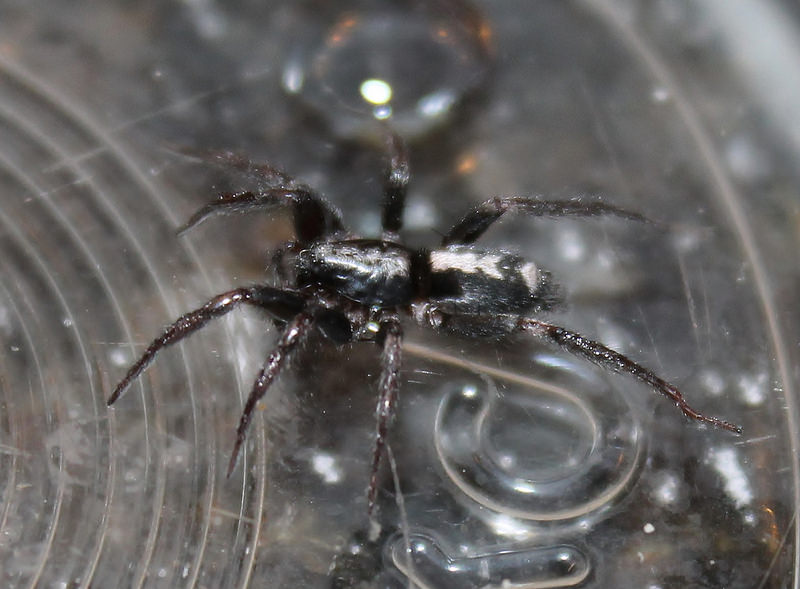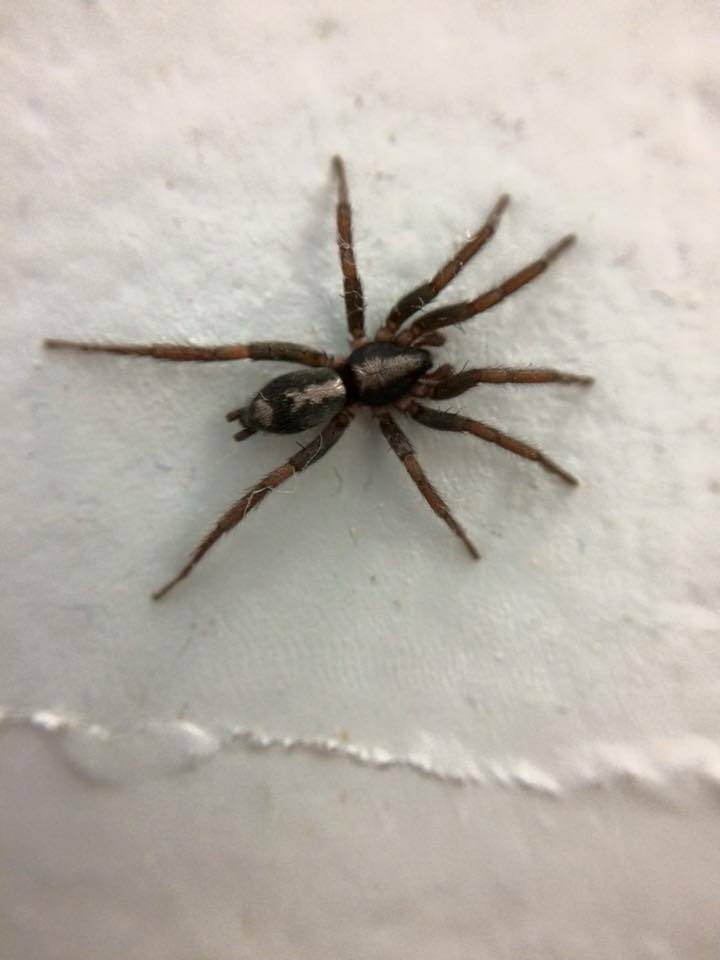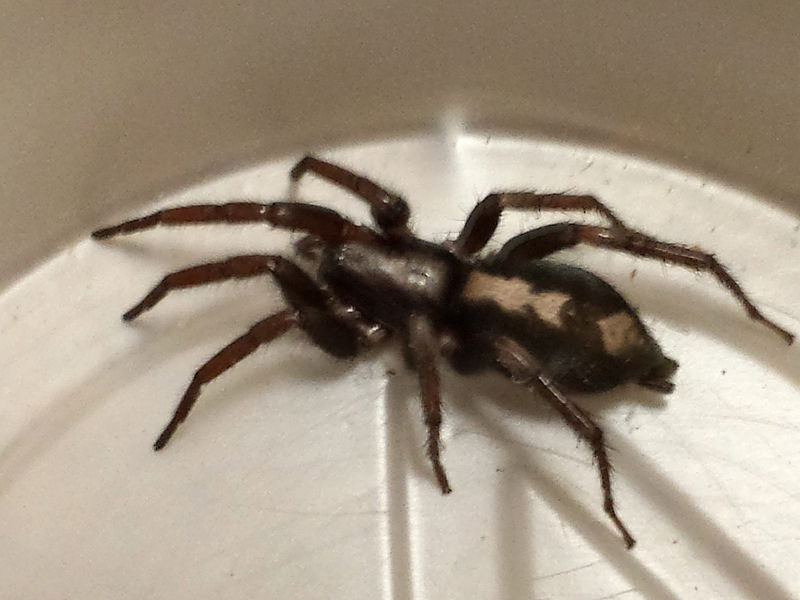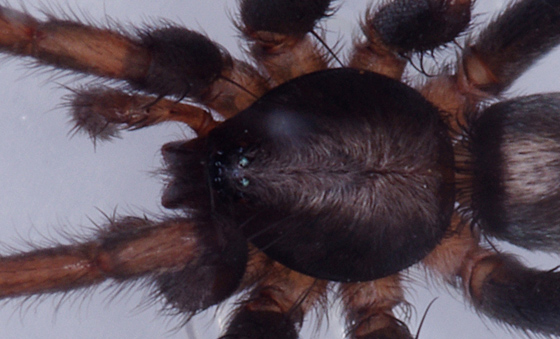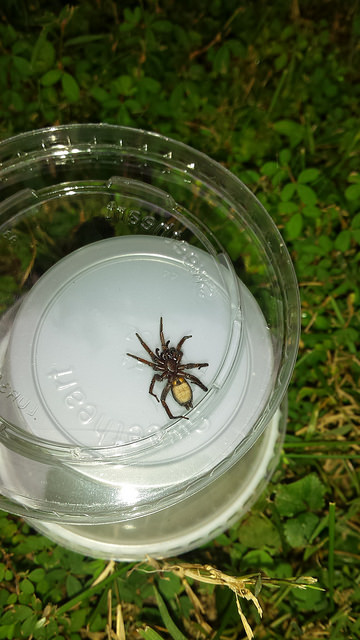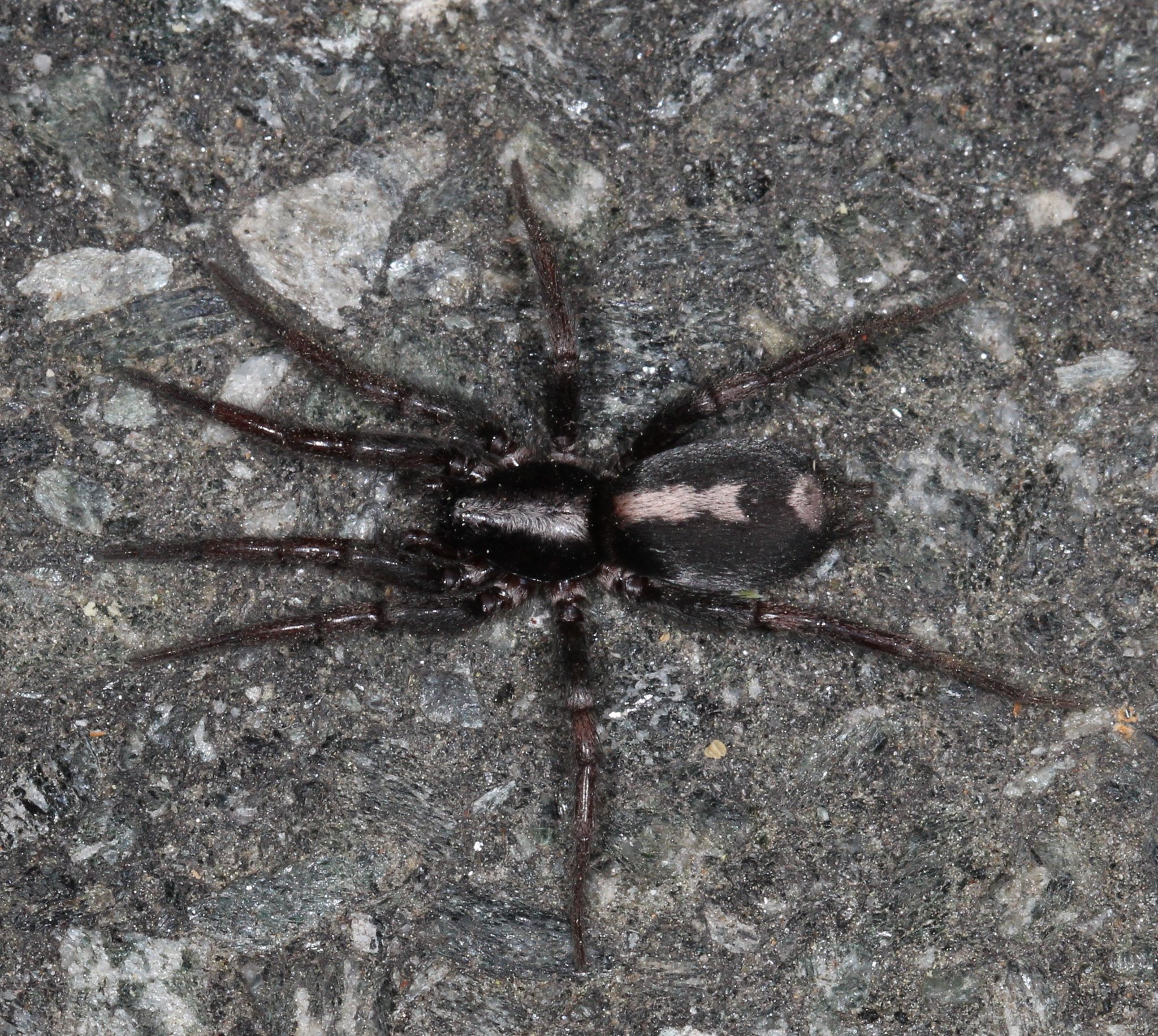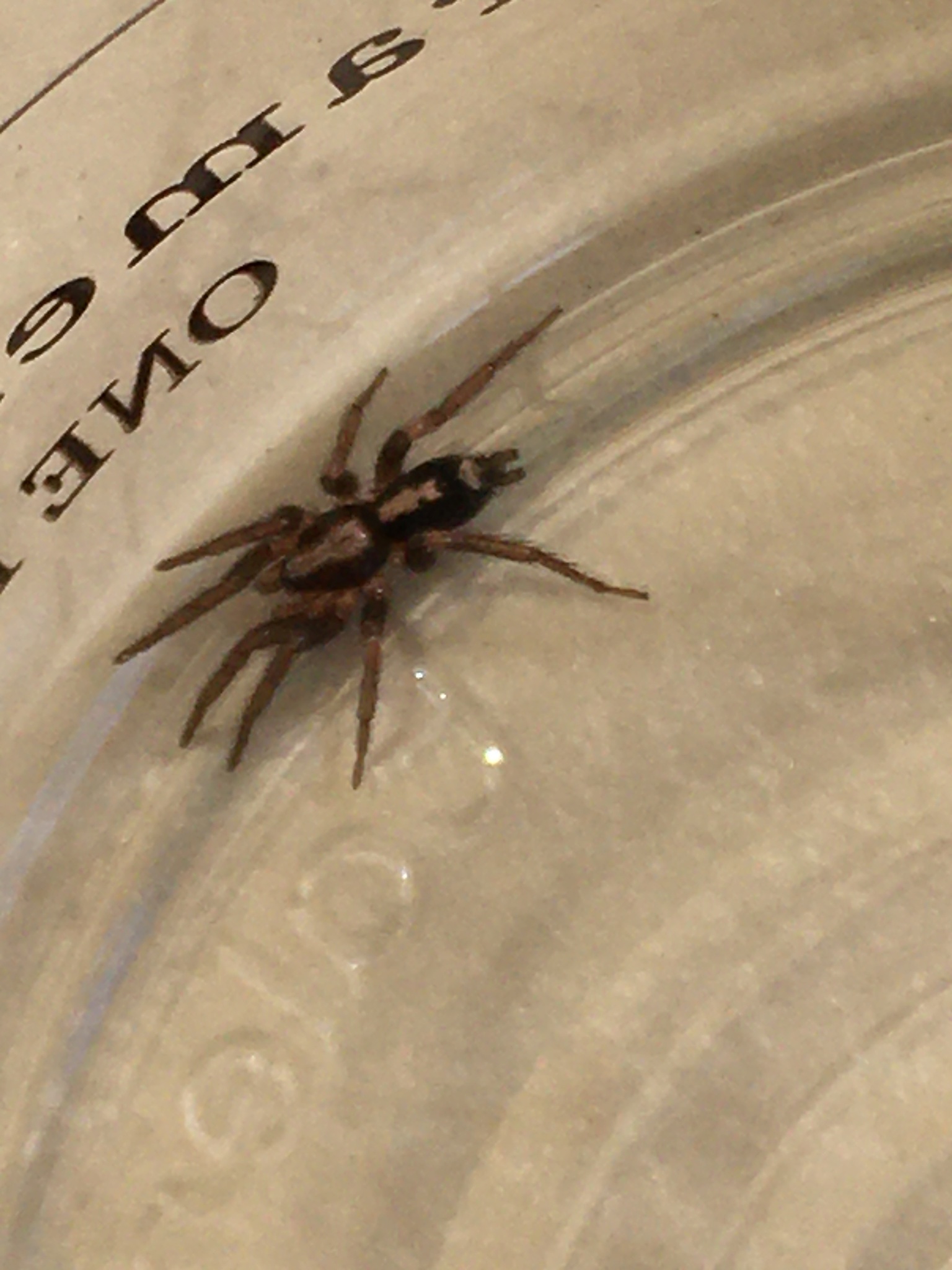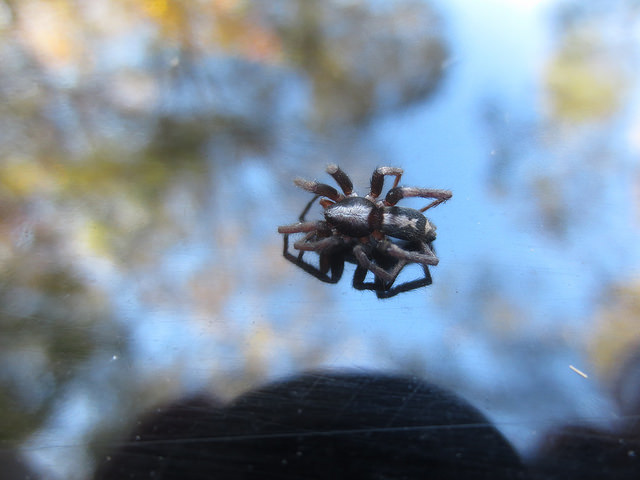Map Snapshot






















138 Records
Description
White markings on black abdomen are distinctive. Common Name is based on the resemblance to a type of necktie worn by some ministers.
Seasonality Snapshot
Source: Wikipedia
| Eastern parson spider | |
|---|---|

| |
| Herpyllus ecclesiasticus[1] | |
| Scientific classification | |
| Domain: | Eukaryota |
| Kingdom: | Animalia |
| Phylum: | Arthropoda |
| Subphylum: | Chelicerata |
| Class: | Arachnida |
| Order: | Araneae |
| Infraorder: | Araneomorphae |
| Family: | Gnaphosidae |
| Genus: | Herpyllus |
| Species: | H. ecclesiasticus
|
| Binomial name | |
| Herpyllus ecclesiasticus Hentz, 1832
| |
| Synonyms | |
|
Drassus vasifer | |

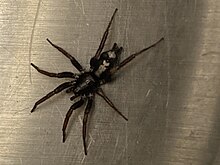



Herpyllus ecclesiasticus, commonly called the eastern parson spider, is a species of spider named after the abdominal markings resembling an old-style cravat worn by clergy in the 18th century.[2] It is mainly found in North America east of the Rocky Mountains, from Alberta, Canada, east to Nova Scotia, and south to Tamaulipas, Mexico, and Florida, US.[3][4] Individuals can be found throughout the year, both in homes and under rocks or logs in deciduous forests.[4]
Description
[edit]Individuals are covered with black hairs on the cephalothorax and gray hairs on the abdomen. On the back is the distinctive white mark that gives the species its common name; there is a small white spot above the spinnerets.[2]
Behavior
[edit]During the day, individuals reside in silken retreats. They emerge to hunt at night.[2]
Bite
[edit]Bites are painful, and some individuals may experience an allergic reaction.[2]
References
[edit]- ^ Philip N. Cohen Eastern Parson Spider Herpyllus ecclesiasticus
- ^ a b c d Jacobs, Steve. "Herpyllus ecclesiasticus". Retrieved June 29, 2019.
- ^ "Nearctic Spider Database". Archived from the original on 2008-10-13. Retrieved 2009-01-22.
- ^ a b Platnick, Norman I.; Shadab, Mohammad U. (1977). "Revision of the spider genera Herpyllus and Scotophaeus (Araneae, Gnaphosidae) in North America". Bulletin of the American Museum of Natural History. 159.
